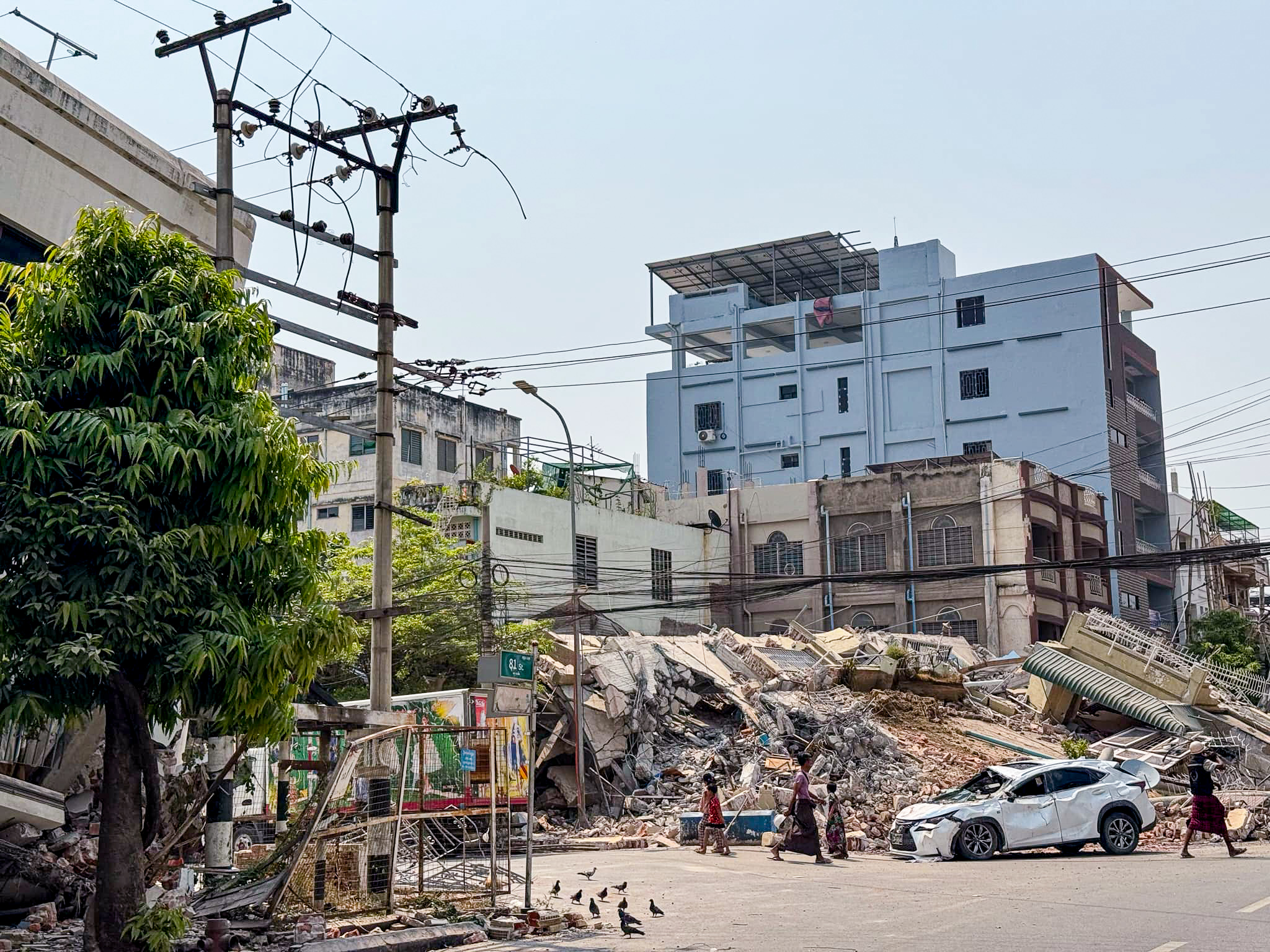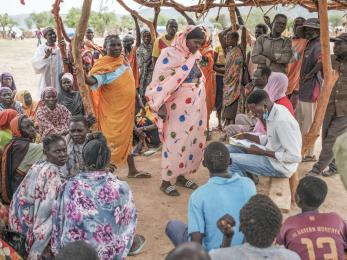The facts: Hurricane Dorian's devastating effect on the Bahamas

As we mark the anniversary of Hurricane Dorian and Bahamians prepare for another hurricane season, we’ve revised these Quick Facts to include updated information on both recovery efforts and the challenges of COVID-19.
Hurricane Dorian was one of the strongest Atlantic hurricanes on record – and the strongest hurricane to have ever hit The Bahamas.
Dorian hit The Bahamas on September 1, 2019 as a Category 5 hurricane, causing flooding and mass destruction on the northwest islands of Abaco and Grand Bahama. The storm pummeled Grand Bahama Islands for 48 long hours before finally moving away from the islands.
According to the Inter-American Development Bank, Dorian caused about $3.4 billion in damages, which is equal to one-quarter of The Bahamas’ GDP.
The current death toll stands at 74 people, with 63 from Abaco and 22 from Grand Bahama, although 245 people are still missing a year later. In addition to the loss of lives, 29,500 people are homeless and/or jobless. Now, with the added crisis of COVID-19 and another hurricane season beginning, the islands’ recovery efforts are adapting to the new normal of 2020.
Learn more about Hurricane Dorian and find out how you can help people recover:
When did Hurricane Dorian hit The Bahamas?
Hurricane Dorian originated in the Atlantic Ocean in late August. It made landfall on Sunday, Sept. 1, 2019, at Elbow Cay, on the Abaco Islands in The Bahamas.
How powerful was Hurricane Dorian when it hit The Bahamas?
Hurricane Dorian was the strongest hurricane on record to hit The Bahamas. Once it made landfall, it hovered over the country — sometimes moving at just 1 mph — for more than 48 hours. All the while, it caused storm surges and wind damage, decimating parts of the archipelago.
What are The Bahamas like after Hurricane Dorian?
Immediately following the storm, images from The Bahamas showed absolute devastation on Abaco and Grand Bahama Islands, where the eye of the storm made landfall. The main airport terminal on Grand Bahama was destroyed. Roads were littered with debris and downed trees, and fuel supplies were limited. Reaching the islands was incredibly difficult, even for first responders and emergency personnel.
“Here's footage our Hurricane #Dorian team took as they landed in Marsh Harbour this weekend. From @jillmorehead: “It was as bad as it looks. Many people have been evacuated from the area and brought to other islands, but the situations on Abaco and Grand Bahamas remain critical.” pic.twitter.com/E3tu04gF1M
‑Mercy Corps (@mercycorps) September 10, 2019

The Abaco Islands were the hardest hit, suffering 87% of the damage. More than 75% of all the homes on the island were either damaged or destroyed. The most impacted areas were primarily inhabited by vulnerable, undocumented migrant populations. In Grand Bahama, satellite data suggested that 76 to 100% of buildings in some areas had been destroyed.
During the hurricane, the aquifer that feeds the more than 200 wells from which Grand Bahamians draw water was contaminated with salt water due to the high storm surge and extensive flooding. The Grand Bahama Port Authority advised residents not to use tap water to drink, wash dishes, brush teeth or prepare food until restoration efforts to flush the aquifer of salt water are complete. Today, those aquifers are still being restored.
Hurricane Dorian affected about 2,500 small and medium sized businesses in The Bahamas. On the island of Grand Bahama, 50% of Freeport businesses and all businesses on the hardest-hit east side of the island were forced to close. Many small and medium sized businesses had no flood insurance, which caused significant damage across the islands.
As Bahamians mark the first anniversary of Hurricane Dorian – in the midst of the coronavirus pandemic and the start of another hurricane season – rebuilding efforts have become even more challenging. On August 1, 2020, Hurricane Isaias battered the islands, damaging roofs and knocking down trees, making that fact all too clear.
“Rebuilding efforts on the islands of Abaco and Grand Bahama are slow, and in some areas haven’t even started. Residents still do not have safe drinking water flowing through their pipes, relying on organisations like Mercy Corps to provide it.”
‑Greg Cormier, Americas team leader for humanitarian response, Mercy Corps

What do people need most after a hurricane?
We know from our response in Puerto Rico after Hurricane Maria that people need electricity alternatives as companies work to restore power, especially in remote areas. They also need access to temporary shelter, clean water and food.
After Hurricane Dorian, the affected islands were completely inundated with sea water, so safe, clean drinking water was a critical priority.
"With so many groups and organisations on the ground, we have to be sure we're not overlapping efforts," says Karla Peña, Puerto Rico director and responder in The Bahamas.


"In Puerto Rico, we worked with local organisations who were able to take us to communities that had gotten no help at all yet, even long after the storm. That's what I'm focused on, talking with local Bahamian groups so we can get the deeper story on what is happening and where people are who are most in need. If you don't have anyone local in the conversation, you won't know who hasn't been reached."
As the impacts of climate change continue to compound, extreme storms like these will grow in intensity and frequency — and they will particularly affect communities that are already living in vulnerable situations. People in The Bahamas need long-term support to recover from this hurricane and help them prepare for and build resilience to future storms.
How is Mercy Corps helping?
Emergency response
In the Dorian’s aftermath, we distributed essentials like clean water and hygiene kits to thousands of people in The Bahamas. We reached more than 950 families (over 4,500 people) with emergency kits that included solar chargers and lights, hygiene and baby supplies, and shelter materials like tarps and rope. To combat the massive electrical blackouts, we distributed over 600 solar lanterns equipped with USB chargers so Bahamians could charge essential devices, allowing them to contact emergency services, get notices from authorities, learn about distributions of emergency supplies and contact their loved ones.
Clean water
We then joined forces with Mission Resolve Foundation to bring clean drinking water to communities on Grand Bahama Island through the installation of a water treatment plant.
The system consists of two reverse osmosis water purifiers that are currently generating nearly 15,000 gallons of potable water each day. After desalination and remineralisation, the water is chlorinated before distribution to the public — according to standards set by the World Health Organization, Grand Bahama Port Authority and the local Department of Environmental Health Services — so it is safe to drink. Providing clean water in this manner has the added benefit of cutting costs and plastic waste.
“Providing communities with a reliable source of clean drinking water means they don’t need to purchase bottled water,” says Mugur Dumitrache, senior water and sanitation advisor for Mercy Corps. “It’s not just that we want to reduce plastic waste — which is significant when an entire island is reliant on bottled water — but bringing in and trucking bottled water takes up urgently-needed space on planes, ships and on the roads at a time when so many other supplies are needed.”
This water treatment system is still in use today, as the aquifers that were contaminated in the storm continue to be restored. Every month, about 15,000 people get their water at the community tap stands where we distribute the water. We also provide healthcare facilities with water, benefitting about 20,000 patients and healthcare staff every month.
In August, Mercy Corps began the process of handing over the management of the water treatment system to the local utility company. Until water is flowing to all of the islands’ households, the local utility will continue distributing clean water to those in need.
Economic recovery
After tackling the urgent needs of those impacted by Hurricane Dorian, we began helping micro, small, and medium-sized businesses on Grand Bahama Island get back to business. Our economic recovery programme supports almost 10% of affected businesses in Grand Bahama, and we’re hoping to expand the programme to Abaco soon. Here’s what we’re doing:
- Providing grants to more than 200 businesses to help them reopen
- Training business owners on business skills to help increase their chances for long-term success and be better prepared for future disasters
- Granting access to MicroMentor, Mercy Corps’ global online mentoring platform
How is COVID‑19 affecting The Bahamas’ recovery from Hurricane Dorian?
Despite the global COVID‑19 pandemic, recovery in The Bahamas continues as best it can. Water is a critical resource and key component of slowing the spread of the virus, and the Mercy Corps team continues to distribute nearly 15,000 gallons of water each day across Freeport, Grand Bahamas. To align with COVID‑19 safety measures, we’ve increased the number of water distributions points in an effort to prevent people from congregating at each site. We’ve also completed COVID‑19 training with on-site water monitors to ensure safe operating and disinfecting methods are used. We’re also putting social distancing guidelines in place at water distribution sites for both workers and those receiving water.
The Bahamas was starting to see signs of economic recovery pre-pandemic, but with COVID‑19 all but shutting down tourism, that progress has stalled. Mercy Corps is providing emergency relief grants to micro, small and medium businesses affected by the pandemic to help get economic recovery back on track.

The biggest challenge for Bahamians is the coming hurricane season. While Isaias brought more damage and heavy rains, it was just the first of what could be a series of storms that crush the islands. According to Greg Cormier, Mercy Corps’ team leader for humanitarian response in the Americas, “If a major hurricane hits and the virus has not been contained, the results could be catastrophic. Because of physical distancing measures, community centers typically housing those affected by a hurricane may not be usable, while food and water distributions may not be as fast as usual reaching people. Logistics and supply chains would almost certainly be further limited by hurricane damage, threatening the lives of people who need medical care and equipment to fight COVID-19, and the lives of people with injuries and health crises caused or exacerbated by a hurricane.”











